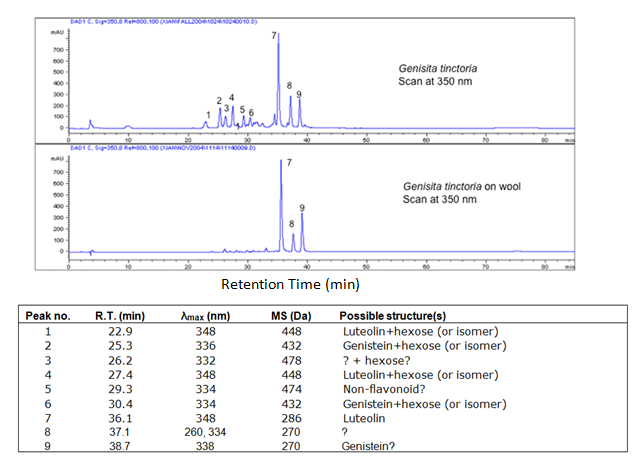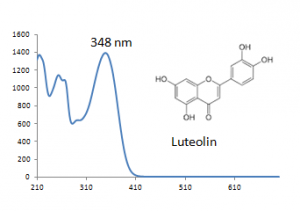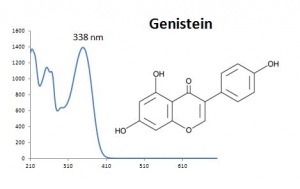Difference between revisions of "Dyer's greenweed (Genista tinctoria) LC"
| Line 3: | Line 3: | ||
== Description == | == Description == | ||
| + | The ''Genista tinctoria'' is called dyer’s greenweed or dyer's broom. It is a variable deciduous shrub growing to 60–90 centimetres (24–35 in) tall by 100 cm (39 in) wide, the stems woody, slightly hairy, and branched. Golden yellow pea-like flowers are borne in erect narrow racemes from spring to early summer. | ||
== Historical importance == | == Historical importance == | ||
Revision as of 08:31, 29 September 2017
[[File:|thumb|Yellow Botanic Gardens]]
Description
The Genista tinctoria is called dyer’s greenweed or dyer's broom. It is a variable deciduous shrub growing to 60–90 centimetres (24–35 in) tall by 100 cm (39 in) wide, the stems woody, slightly hairy, and branched. Golden yellow pea-like flowers are borne in erect narrow racemes from spring to early summer.
Historical importance
Summary of results
Analytical instrumentation and procedures
HPLC-DAD-MS analysis was performed with an Agilent 1100 liquid chromatography system consisting of an automatic injector, a gradient pump, a HP series 1100 DAD, and an Agilent series 1100 VL on-line atmospheric pressure ionization electrospray ionization mass spectrometer. Separations were done on a Vydac 214TP52 analytical column (2.1 mm diameterX250 mm; 5-ím particle size). The column was eluted at a flow rate of 0.2 mL/min with a tertiary gradient of water (A),acetonitrile (B), and 1% (v/v) aqueous formic acid (C) with the following elution program: 0 min, 90% A, 5% B, 5% C; 0-55 min, a linear gradient to 35% A, 60% B, 5% C; 55-60 min, a linear gradient elution to 15% A, 80% B, 5% C; 60-62 min, isocratic elution at 15% A, 80% B, 5% C; 62-70 min gradient elution to 90% A, 5% B, 5% C; and reequilibration with the latter solvent for 15 min. The mass spectrometer was run both in the negative and positive ion mode.
Chromatograms
Sample information
Identified compounds
| Compound | RT (min.) | MW | UV/vis | Other |
|---|---|---|---|---|
| Luteolin | 36.1 | 286 | 348 | Comments here |
| Genistein | 38.7 | 270 | 338 | |
| x | x | x | x | |
| x | x | x | x |
References
[1] [2] [3]



